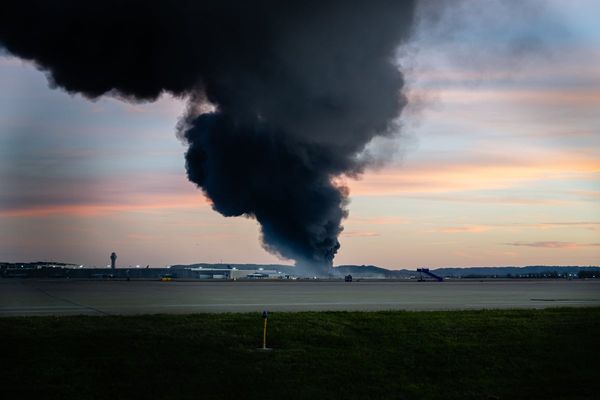
Wild zoology, a name I have just invented, is the study of animals in the wild. It will have started when it was in our interests to observe what things we might eat and what might eat us. In some senses, all animals do that. But today, wild zoology is an important science. We need to know what animals do and where they do it to understand how the diverse elements of ecosystems interact to make the system work. Robust, functioning ecosystems have robust, healthy animals within them, and everybody should want that.
Perhaps the crux of the problem to getting information about wild animals is that they often do not want to be seen. Few animals do not react to man and the lifestyles and attitudes of many mean that we do not see them for much of the time because they guard appreciable distance between us and them, or operate at times and in places where they cannot be seen – the ‘dense forest’ or at ‘dead of night’ phenomenon. As a consequence, an array of technologies are being developed for the study of wild animals at distance - for example, telescopes and binoculars have been adapted to allow observation in the dark, with image intensifiers and infra-red cameras. Filming them means that we could inspect recorded behaviour time and again, replaying to pick out the minutiae.

However enlightening this approach might have been, such methodologies don’t help researchers lacking ‘line of sight’. Enter the concept of tagging animals. Initially, in the 1950s, animals carried simple radio-transmitters so that researchers with directional antennae could use them to derive the direction from which the signal came – with two people doing that at the same time in different places, the tag, and therefore the animal, could be triangulated and its position determined, even when it was hiding in thick forest. This transmission telemetry was revolutionary, because it enabled researchers to see where animals hang out, even if they hid in trees, whether rain or shine, day or night.
After this, radio-telemetry’s big brother, satellite telemetry, took this approach to a global scale in the 1990s, freeing workers up from the need to wander up and down varyingly hostile landscapes, and leaving the onerous triangulation to impassive orbiting satellites. Indeed, satellite telemetry suddenly allowed us to follow wandering albatrosses as they sallied forth into the wild southern Ocean for their breakfast, thousands of kilometres from their nest.
One final concept was critically important in helping us study wild animals today, and that was the inception of the logger. This is a tiny recording device that clings to its wild animal carrier, obsessively noting down everything that its host does. Although the first versions of these smart tags were composed of sealing wax and string, their powers have grown out of all proportion to their first clumsy versions. This change occurred during the age of the silicon chip where consumer hunger for things like small smart phones demanded performance and, in the process, produced memory chips and sensors that changed animal-attached loggers into truly clever tags, with a capacity for measuring almost anything.
Today, smart tags can record everything from the squeaks and speeds of whales a mile underwater as they rush to catch squid at pressures of 1500 lbs per square inch to the heart-rate of geese struggling in the thin air to migrate over the Himalayas. Sensors in smart tags can help quantify the environment, such as the temperature, humidity, and light intensity in which animals live. They can identify diverse animal behaviours, such as how many bites of grass a wild goat makes in an hour on the mountain, and therefore how much the vegetation is impacted. They can also tell us about the energetic cost of behaviours.

Energy, and its judicious conservation by animals, is at the heart of much of conservation biology because how hard animals have to work to survive can tell us how close they are to the edge. But context is also important for interpreting behaviour, and recent smart tag work has shown that the right sensors seem able to indicate internal state, such as when animals are sickening or stressed, both factors that affect animal actions. The implications of this are profound, with ramifications ranging from understanding the spread of avian flu to how much oil pipelines might impact local wildlife.
Not that determining animal state is easy. In fact, it highlights the next big challenge. Our new world of ultra-sophisticated electronics has brought us the smartest of tags, that record hundreds of data points per second from multiple sensors, with untold potential for understanding how animals behave in this changing world. These tags can help us understand animal needs and weakness, and for seeing how animals slot into the ecosystems in which they live. The trick to doing this is teasing the strands of spaghetti, the massive streams of data, out from the plate to show the patterns.
So in fact, the frontier is now slowly shifting from the tags to the software, in much the same way as the web is doing with respect to the hardware that collects data for it. Is this all change again, then? These are exciting times for the wild animal zoologist, with incredible possibilities that depend on our various technological advances. However, to keep things in perspective, we also need to remember the number of species and ecosystems whose very future depends on us getting it right rather than getting lost in a dazzling array of flashing fancifulness.
Professor Rory Wilson is head of the Department of Biosciences at Swansea University’s College of Science. In 2006 Rory was awarded a Rolex Award for Enterprise in the field of applied technology.







